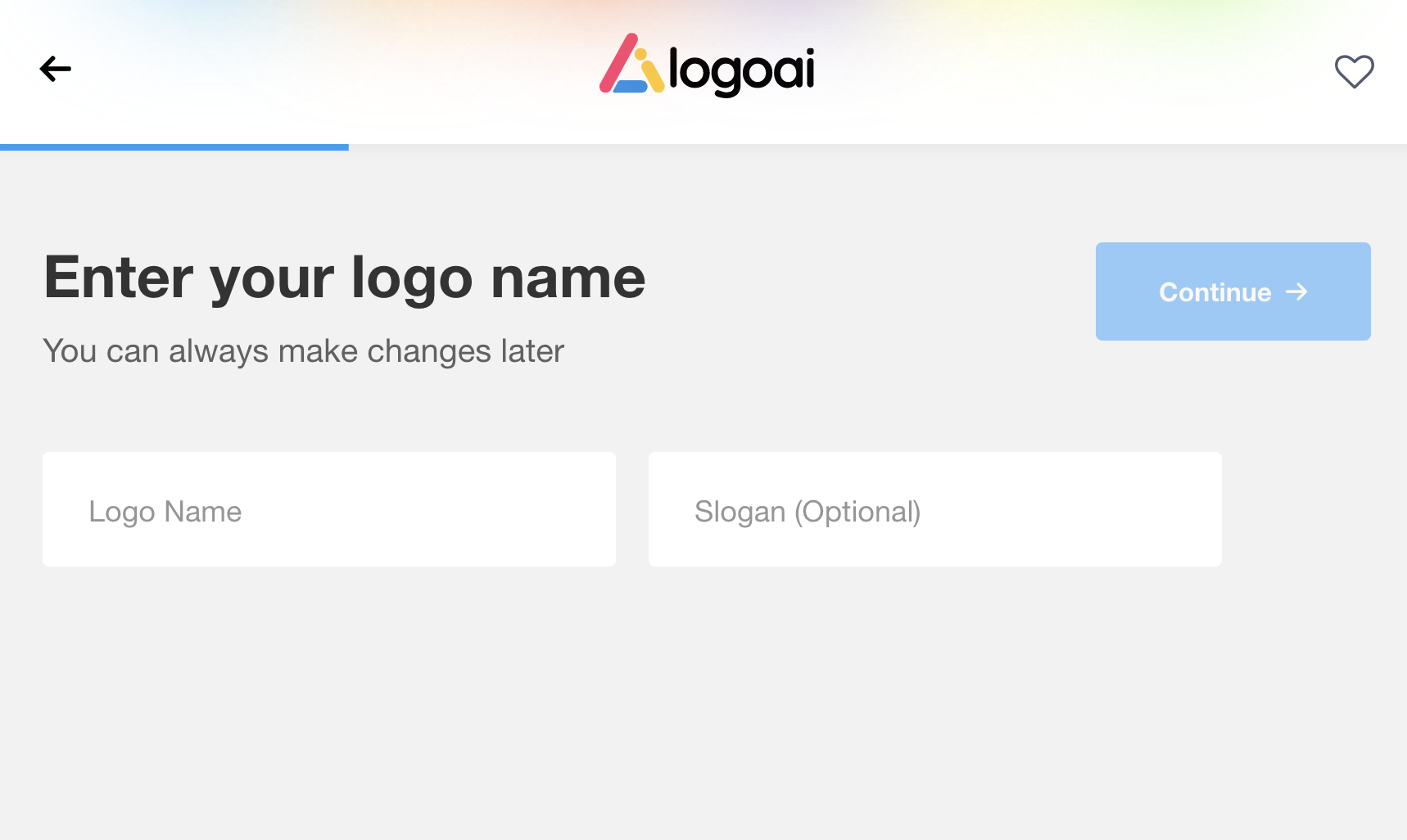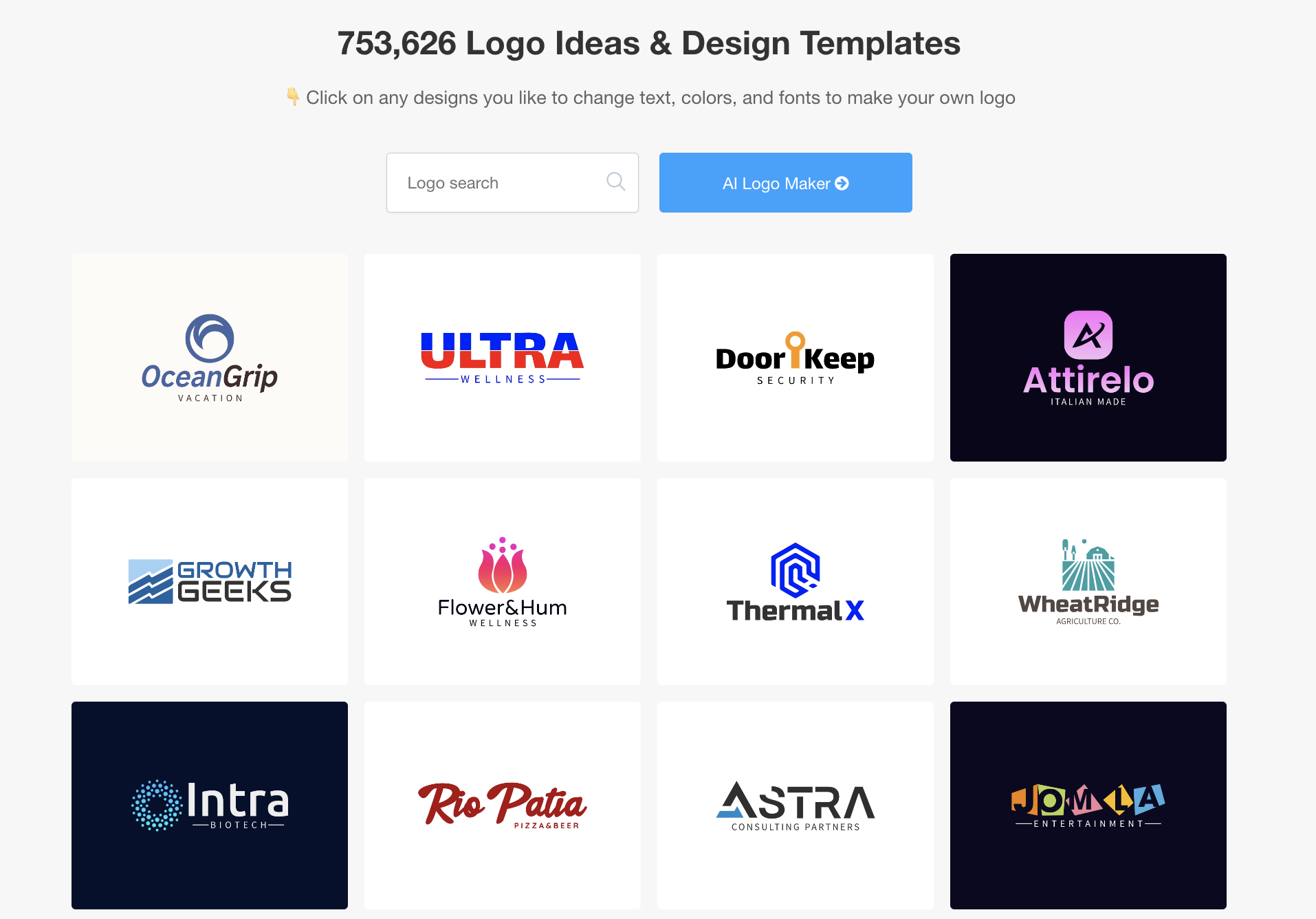Choosing the perfect name is likely the first hurdle to overcome when launching your business, whether it's a cozy café or an innovative tech startup, you want a name that will make your brand stand out. In this blog post, we'll cover top tips to guide you selecting the ideal business name. Once you've settled on the perfect name, let our logo generator assist you in designing an eye-catching logo that complements your brand.
What Makes a Good Brand Name?

Although there isn't a one-size-fits-all solution, certain characteristics can make a brand name more effective and memorable. We recommend that you brainstorm using our AI business name generator and look for names that are:
- Memorable: Easy to recall and sticks in people's minds
- Unique: Sets your brand apart from competitors
- Meaningful: Conveys your brand's values, purpose, or product offerings
- Easy to pronounce and spell: Ensures customers can easily share your brand name
- Versatile: Adapts well to various marketing materials and channels
- Timeless: Remains relevant and effective over time, even as your business evolves
- Domain availability: Has an available URL for a strong online presence
How to Come Up With Your Brand Name
Step 1: Determine The Core Of Your Brand.

To truly come up the perfect brand name and create a strong identity, you must first figure out the essence of your brand. This includes:
- Pinpointing your mission
- Recognizing the products or services you offer
- Embracing the distinct methodology you implement
Essentially, understanding your brand's essence—why it exists, what it does, and how it does it—is crucial. This foundation underpins all marketing efforts and communication strategies, encapsulating your brand's values, mission, and vision. By delving into your brand's core, you create an authentic connection with your target audience, fostering loyalty and trust and develop examples of minimum viable product that match your audience.
Step 2: Do a Competitive Analysis.

A competitive analysis is a systematic assessment of your competitors, aiming to understand their strengths and weaknesses relative to your business. By understanding your competitors' strengths and weaknesses, you can identify gaps in the market and opportunities for differentiation.
Through a competitive analysis, you can uncover your competitors' unique selling propositions (USPs), enabling you to develop your own USPs that set your brand apart. This allows you to tailor your brand strategy to resonate better with potential customers.
Step 3: Brainstorm.

Here are some strategies to assist you in brainstorming the perfect name for your brand:
- Use word associations: Think of words related to your brand and its values, then explore synonyms, antonyms, or related terms.
- Experiment with foreign languages: Explore words or phrases from other languages that are relevant to your brand or industry.
- Acronyms and abbreviations: Consider using the initials of a longer phrase or combining the first letters of multiple words to create an acronym or abbreviation for your business name.
- Portmanteaus: Combine parts of two or more words to create a new word that represents your brand. For example, the name "Groupon" is a portmanteau of "group" and "coupon."
- Alliteration and rhyme: Play with words that have the same beginning sounds (alliteration) or words that rhyme.
- Use metaphors or symbolism: Look for metaphors or symbols that represent your brand's values or the benefits your products or services provide. For example, Nike is named after the Greek goddess of victory, symbolizing the brand's dedication to athletic achievement.
- Geographical references: If your brand has a strong connection to a specific location, consider incorporating the name of that place or a related landmark into your business name.
Step 4: Make Sure It’s Available
 Alright, so you've got a business name idea (or maybe a couple) that you're pretty stoked about. Now, it's time to dig in and make sure it's actually available for you to use. So long story short, here's what you need to do:
Alright, so you've got a business name idea (or maybe a couple) that you're pretty stoked about. Now, it's time to dig in and make sure it's actually available for you to use. So long story short, here's what you need to do:
- Search the internet: Conduct a Google search to see if any businesses or websites already use the name you have in mind.
- Check social media platforms: Search for your desired brand name on popular social media platforms (e.g., Facebook, Twitter, Instagram, LinkedIn) to see if any accounts or pages already use it.
- Verify domain availability: Use domain search tools like NameHero, GoDaddy, Namecheap, or Google Domains to check if your desired domain name (e.g., www.yourbrandname.com) is available for registration. If it's not available, consider alternative domain extensions (.net, .org, .co, etc.) or slight variations in the name.
- Trademark search: Perform a trademark search using the database of your country's trademark office (e.g., USPTO in the United States) to ensure your brand name isn't already trademarked by another business.
- Consult legal advice: To avoid potential legal issues, consult an attorney specializing in intellectual property or trademark law.
Step 5: Design Your Logo
 After securing the perfect brand name, the next crucial step is to design a logo that captures the essence of your brand. In today's digital age, you can leverage the power of AI to create stunning and professional logo designs with ease. By using AI-driven logo design tools, you can just enter your brand name and quickly generate a logo based on your industry, style, and preferences.
After securing the perfect brand name, the next crucial step is to design a logo that captures the essence of your brand. In today's digital age, you can leverage the power of AI to create stunning and professional logo designs with ease. By using AI-driven logo design tools, you can just enter your brand name and quickly generate a logo based on your industry, style, and preferences.
As you navigate the logo creation process, you can also explore various logo ideas and customize them to align with your brand's vision.
By blending the art of AI and the creative insights gathered from mood boards, you can craft a distinctive logo that captivates your audience and truly reflects your brand's identity. So, take the time to explore different naming approaches, leverage the power of AI for logo design, and build a solid brand strategy that reflects your core values and offerings and fosters a memorable customer journey. By doing so, you'll be well on your way to creating a brand that resonates with your customers and drives growth.
-1683185128.png)







